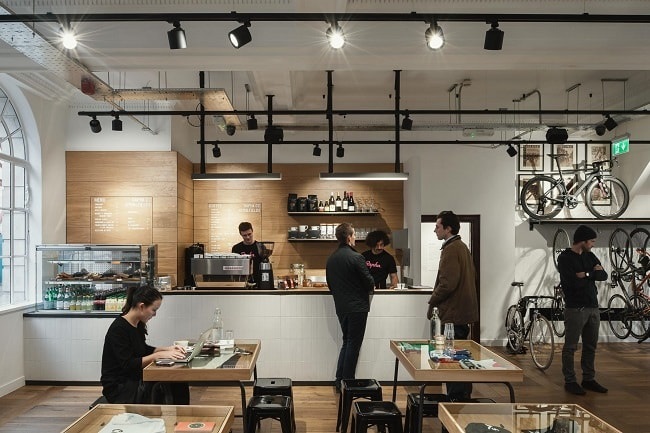1
HOME > Business >
IN CONVERSATION WITH DOMINIC MCCARTHY OF ANM
LIFE ON LONDON HIGH STREET
Written by Menswear Style in Business on the 26th June 2018

For a recent Podcast episode, we sat down Dominic McCarthy from ANM PR Agency to talk about the state of British retail. Dominic has overseen the recent ready-to-buy catwalk at St James for London Fashion Week Men’s and his company specialises in Menswear, Luxury and Fashion. The company is also the marketing head for many stores on Jermyn Street and Savile Row such as New & Lingwood, Richard Anderson and Chester Barrie to name a few. Here we bring you a shortened version of the interview but click here If you would like to listen to it in full.
I was just at the catwalk at St James and it was really good. It’s your 4th year doing that, how did it go?
“It went well, it get’s better every year. Jermyn Street is such an iconic street and each year we add a bit more to the theatre of it all, the drama and the brands we use. It’s hard work in preparing but it’s a lot of fun. London Fashion Week Men’s has just gone from strength-to-strength under the British Fashion Council. We start planning in December such as budgets, the council, online influencers and there were a total of 33 brands on the catwalk this year too.”

For those of our audience not familiar with Jermyn Street compared to Savile Row, how would you compare the two?
“Jermyn Street really is the menswear street for shirts, ties, shoes, hats and accessories, whereas Savile row is mainly rich in tailoring. You buy your suit from Savile Row but you come to Jermyn Street to accessorise it with socks, cufflinks and outerwear etc. and that’s the main difference of the two. We work with Chester Barrie and Richard Anderson on Savile Row which are great brands to work with, and on Jermyn Street we have John Smedley and New & Lingwood, so it’s a rich mix.”
How are these very traditional fashion houses coping with the modern demand of online?
“My clients have embraced the online offering. They realise that by having a great website and as long as they have the logistics, they can sell products all around the world. There is an appetite for that globally. Obviously, this is a bit different for Savile Row with made-to-measure where you have to visit for fittings, but for shirts, ties, accessories etc. you can deliver them anywhere. So I think they’re seeing that online shopping is another string to their bow and it gives them global reach. However, at the end of the day, any heritage brand that really wants to succeed, you need a brand home; a place where the consumer can come and touch your product, it’s where the brand comes to life. The clever brand has a mix of both and the dumb brand has too many shops, too many leases and not enough online presence.”

Marks & Spencer among others have been around for a while, yet they’re under threat. What do you think they got wrong?
“The brands that have struggled such as Austin Reed, House of Fraser and M&S have no point of difference. If I asked you what M&S stands for in terms of clothing, you couldn’t tell me and that is the problem. Retailers need a point of difference because the market is oversupplied and competitive. When you look at some of the big retail chains, they have historic leases e.g. when Austin Reed went down you could have actually turned that into a profitable company by shutting down all the retail and subletting the premises. Having a lease, staff, services and overheads is expensive, whereas online you don’t have that, so you have to get the balance right. Net-a-Porter for example came to the online market in 2000, and House of Fraser – the largest department chain in the UK – didn't come online until 7 years later. Technology is moving so quickly and sometimes a lot of the people running the UK retail scene in the 90s and early 00s were just not tech savvy. They still believe in old school retail and it hasn’t worked out for them and they’re now struggling. Does a business really need 60 department stores in the UK? I’d say probably not, and they’ve not been making money as a result for a while.”

Everything has become an experience on the high street; stores with coffee shops, barbers and yoga floors etc. What other things can brands do to futureproof themselves?
“A lot of business are finding it hard to deal with the current economic climate of Brexit because suddenly the cost of goods has gone up which is tough. But the upside is that you’ve got more tourists coming to London and spending more money. In terms of the marketing of a brand, it is increasingly about lifestyle. That’s why at Lululemon you have yoga classes in store and look at Rapha who’ve put in coffee bars into what is essentially a bike and accessories shop; that is a super smart move because they know that their consumers will come in for meetings and dwell. It’s all about lifestyle now.”
Trending
2
3
4
5
6
7
8
9
10









